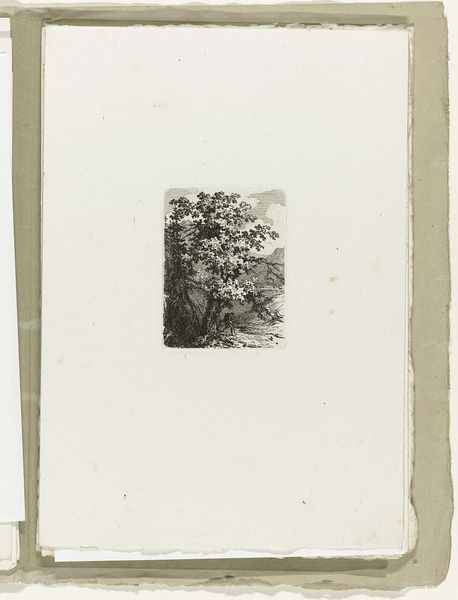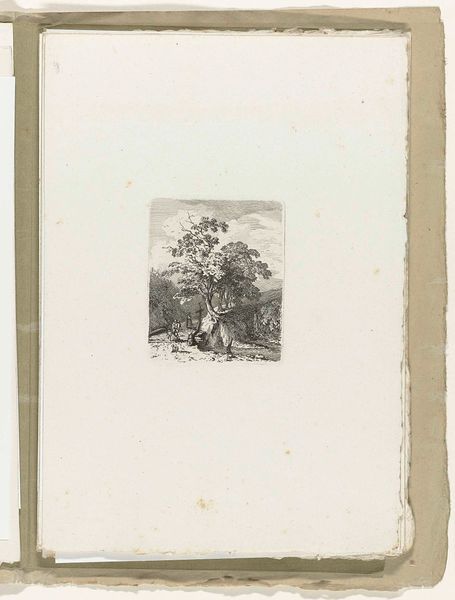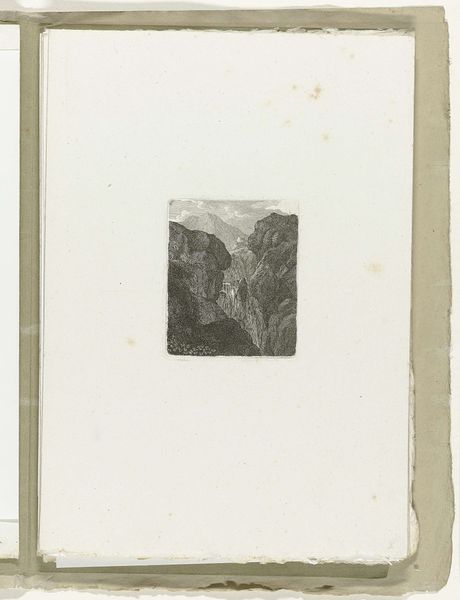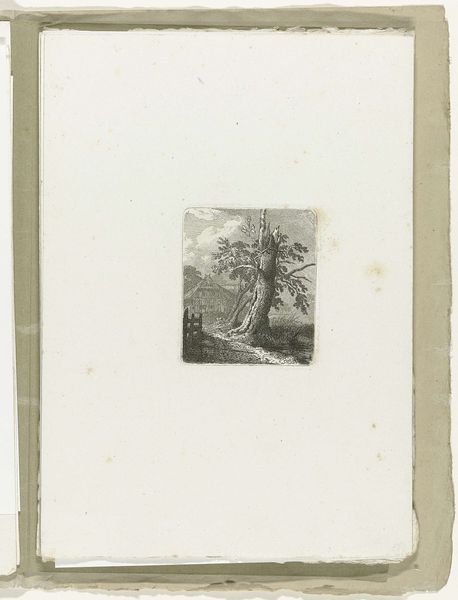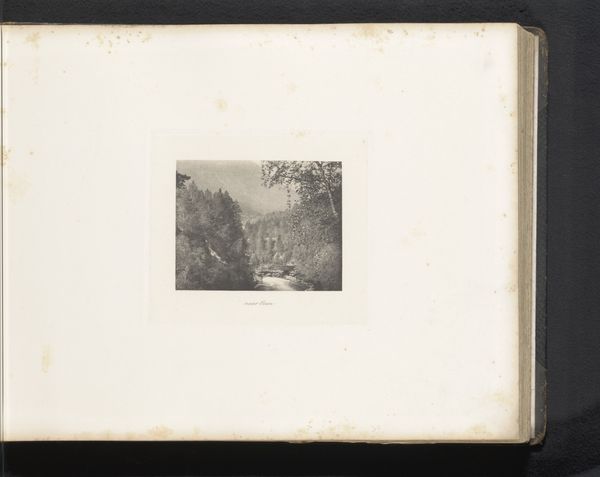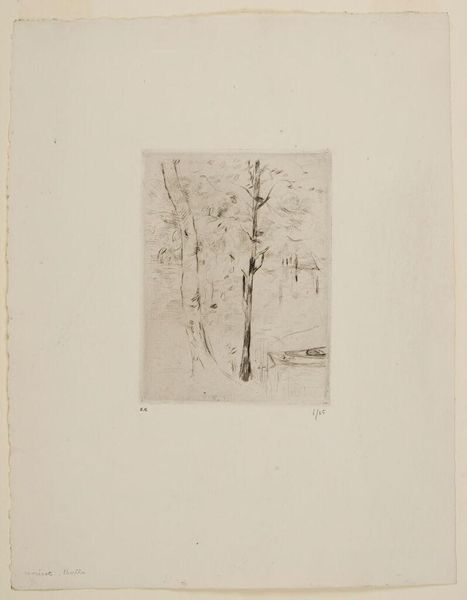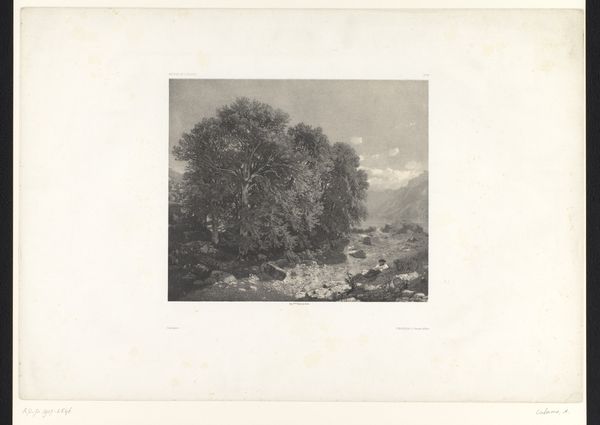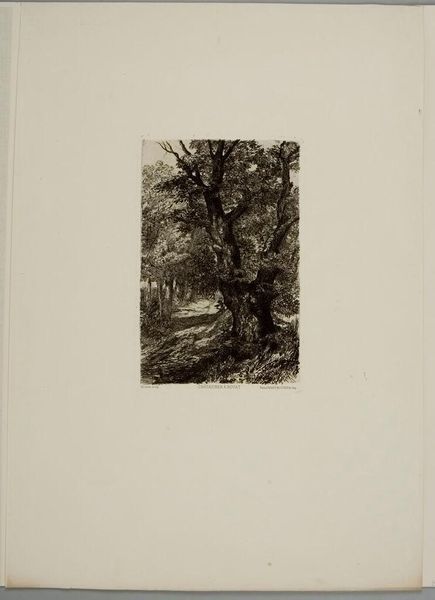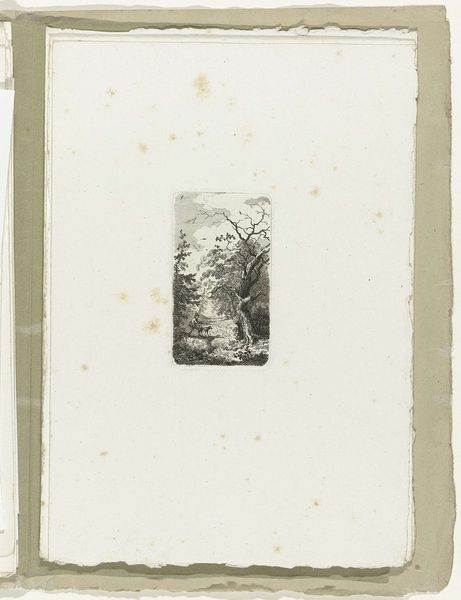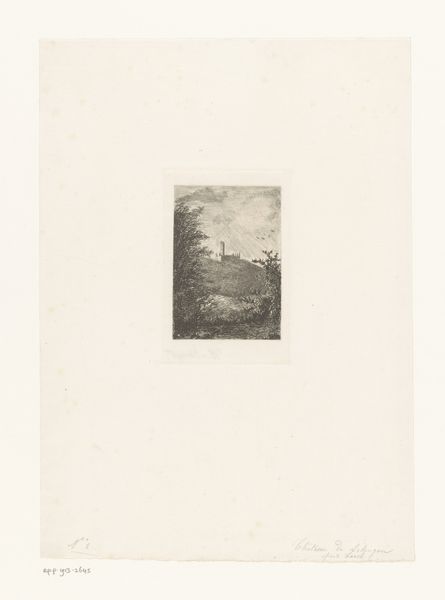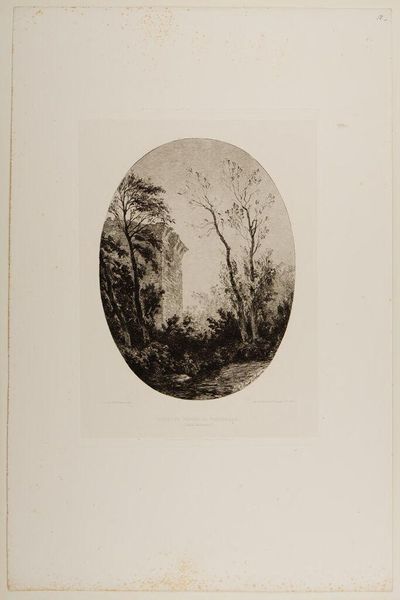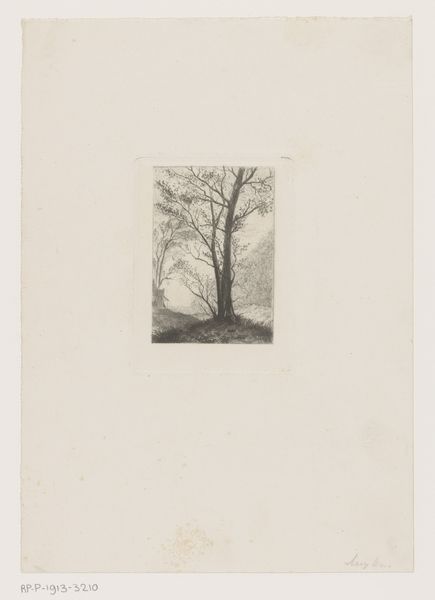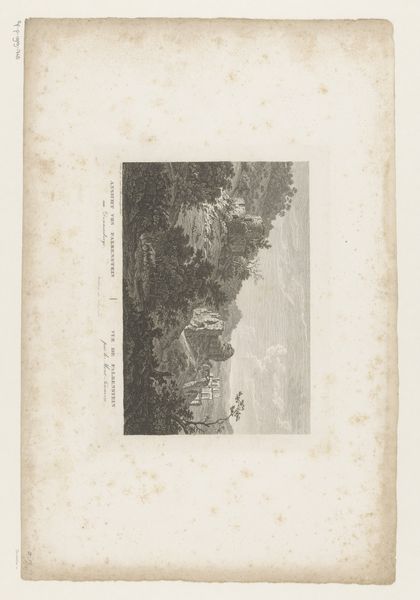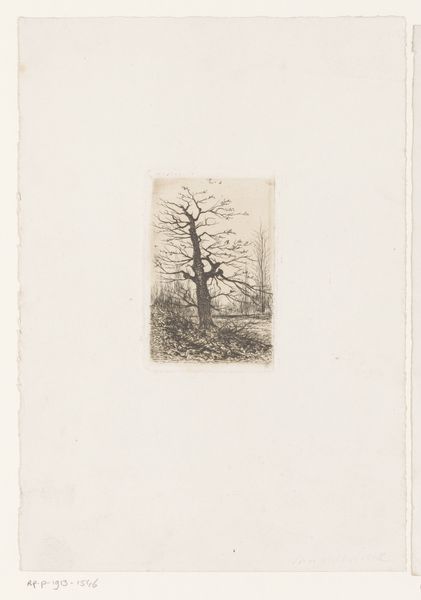
print, engraving
# print
#
old engraving style
#
landscape
#
romanticism
#
line
#
engraving
Dimensions: height 94 mm, width 84 mm, height 280 mm, width 181 mm
Copyright: Rijks Museum: Open Domain
Curator: Let's turn our attention to this delicate engraving, "Watermolen in een berglandschap," or "Watermill in a Mountainous Landscape," created by Carl August Lebschee in 1827. Editor: It’s striking how much detail Lebschee managed to capture. My initial sense is one of quiet solitude—a world far removed from any sort of industrialized progress, despite the titular watermill. Curator: The romantic style certainly emphasizes a retreat to nature. Notice how the artist utilizes a delicate line to create texture and depth. Semiotically, the composition directs our gaze; the watermill is nestled among the trees at the foot of a mountain. The old engraving style renders an incredibly atmospheric image despite its tiny size. Editor: Absolutely, and consider the historical context. This piece was created in an era marked by nascent industrialization. These kinds of images spoke to anxieties and desires of the time. Lebschee has rendered this scene so carefully as if trying to offer viewers a place of respite and reflection in the face of that rapid change. Curator: One can easily be swept up in the nostalgia. The lines direct one’s attention across the planes from the bottom to the clouds above. Editor: Do you think there's a romanticization of labor here? The watermill signifies industry, yet it’s softened by the landscape. The image avoids directly confronting the harsh realities faced by those who labored at the mills. Curator: I would say the sublime mountain looms large and signifies Nature’s power, yet the mill represents humankind's ingenuity. These two formal elements—mountain and structure—are harmoniously balanced within the overall composition. Editor: On that point we must part ways; by carefully framing his composition, Lebschee prompts questions about who has access to such idyllic vistas and whose labor underpins that vision of nature. Curator: I will concede it has inspired lively analysis! Editor: Indeed, a welcome task.
Comments
No comments
Be the first to comment and join the conversation on the ultimate creative platform.
